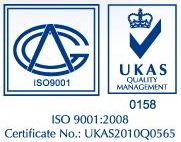Isolated floors, walls and ceilings

Mechanical equipment is often a major source of noise in a building. High mechanical equipment sound levels can result in serious complaints from building occupants (sound receivers).
Isolated Walls
Sound transmission loss through a single cavity two-wall system is significantly increased by resiliently separating one wall from the other. VMC's Isolated Wall System, Type WIB (wall isolation brace), Type WAB (wall angle brace). Type WIB (wall isolation pad) and Type TMRB mounts (track mounted ring and bushing), combing:
- Cost Effective Products
- High Performance
- Ease of Installation
For details, please refer to the PDF available here.
Isolated Concrete Floors
A floating floor system is used to obtain
high degrees of living and work space comfort in noisy and/or vibration-active environments, or to realise a reduction of noise and vibration disturbance in the environment (factories, discotheques, technical floors, sporting halls). Its high performance makes it also the deal system to be used for sound-sensitive areas such as recording studios, auditorium, theaters, anechoic rooms, etc. Depending on the isolation levels to be obtained, different types of floating floor systems can be proposed:
- ASFF Spring Jack-up Mount
- ANFF Neoprene Jack-up Mount
- QFFN Neoprene Mount
- QFFG Fiberglass Mount
For details, please refer to this PDF available here.
Isolated Ceiling
Sound Barrier Ceilings have proved to be a capable tool for the control of noise occurring above or in a treated room. Until now, space requirements for that ceiling or the penetrating of barrier construction to support mechanical services has often been a nightmare both to the designer searching for height and the consultant seeking effectiveness.
The introduction of our LPCH system addresses these two primary design requirements.
Conventional ceiling isolators such as our RSHSC were all that were available until the development of our Low Profile Series isolation hangers.
The Low Profile Hanger System allows for :
- Minimal ceiling space above framing members
- Code Approved support of services and/or a secondary Ceiling without a myriad of penetrations.
- Installations with as little as 1/4" above the cold rolled suspension members.
- Sound barrier and finish ceiling from the same isolation hanger.
- Combination of sound barrier, finished ceiling, and mechanical/electrical services, all suspended from the same isolation hanger without multiple penetrations.
- Easier and less expensive to install than conventional ceiling hangers.
- Isolator deflections from 0.35" to 2.35".
For details, please refer to the PDF available here.


